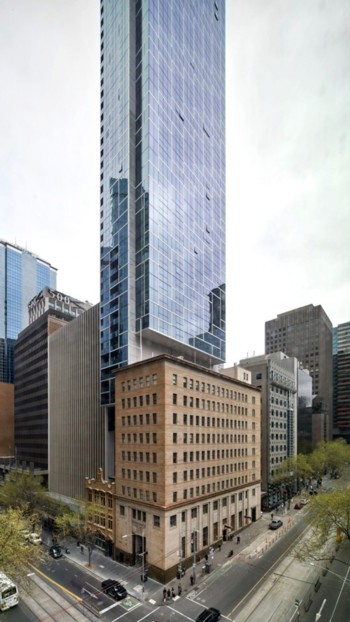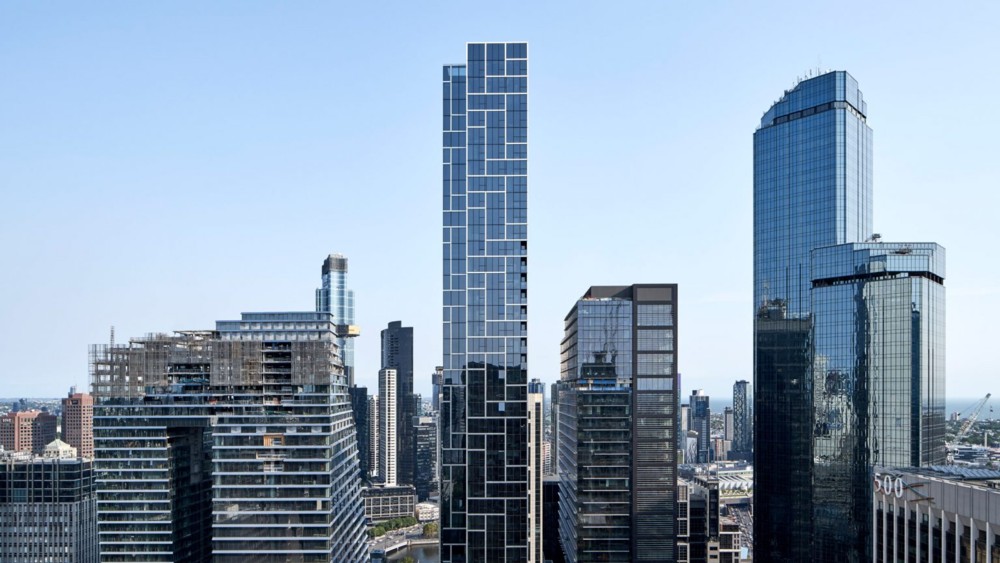 Some Australian architects called Bates Smart have completed a very skinny skyscraper in Melbourne.
Some Australian architects called Bates Smart have completed a very skinny skyscraper in Melbourne.
Skinny skyscrapers are now a definite trend. I recall speculating that this trend might have something to do with views having become a bit more desirable. But it is clear that what is really happening is that plots of available urban land are getting smaller, while structural engineering is getting cleverer. They build these Thin Things because they have long wanted to, and because they now can.
Personally I like the look of these Thin Things very much. Your typical old school skyscraper is often suitably elegant from afar, but when you stand right next to such a Thing at ground level it can be a bit overhearing, and just plain big. This Thin Thing has, at its base, a little decorated frontage left over from the previous building, that is no wider than a terrace house.
So, Keeping Up Appearances at ground level, while above that, the new stuff above soars off into the sky. This is a style I really like. Front doors need to announce themselves, in the established language of older and smaller buildings. What happens above them can just be tall and shapely. (That creaking sound you hear is the cadaver of Ayn Rand, turning in her grave.)
Since the top of this Thing is sliced off in the above-right photo, here’s how that top looks:
We have plenty of Keeping Up Appearances buildings in London, but I wish we had more of these Thin Things. Something to do with the soil? Maybe later. Sooner rather than later is my hope.


Residential towers require windows for every apartment, and ideally for every room.
Office towers do not. Senior people get offices with windows on the edge of the building and executives get corner offices, but the plebs don’t.
A lot fewer people are going to be working in offices going forward, so look for a much higher proportion of tall buildings to be residential, and thin.
There is still a certain stigma to living in a tall tower in the UK, I think, due to the majority of residential towers in the UK being ghastly public housing from the 1950s and 1960s. This stigma does not exist in Australia, and Australia’s city centres are full of nice, much more modern residential towers.
Except: Sydney and Melbourne have a few of those 1950-60s ghastly residential towers. Those in Melbourne are now the centre of a coronavirus outbreak, whereas the disease has been pretty much eliminated from the rest of the country. Therefore, those that do exist are getting a lot of publicity right now.